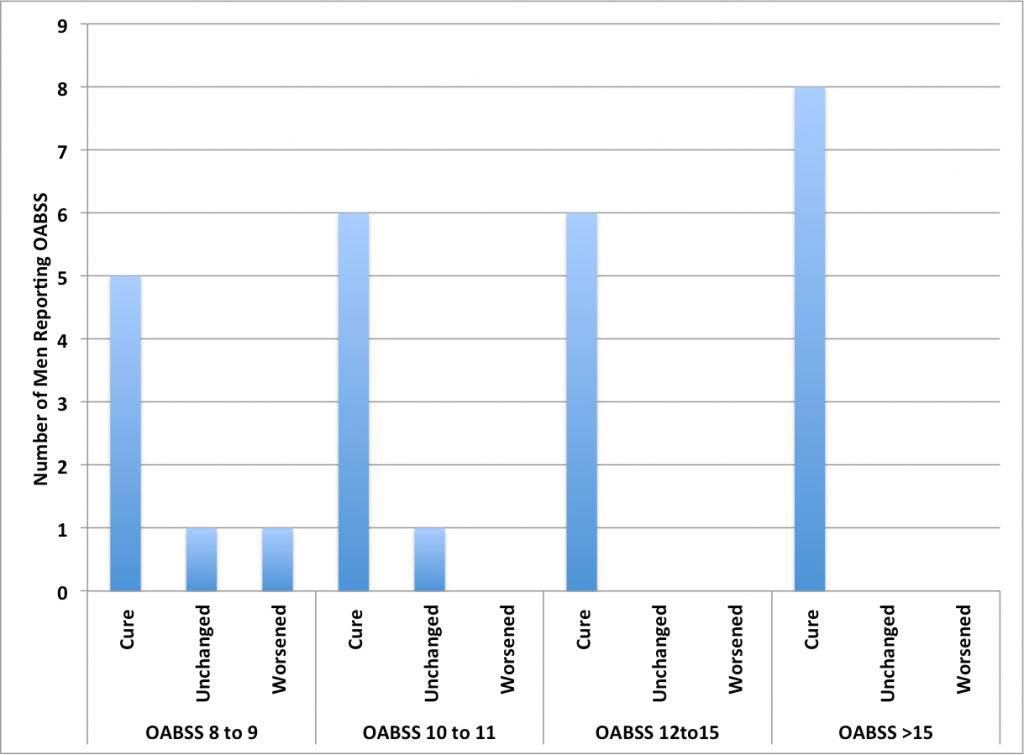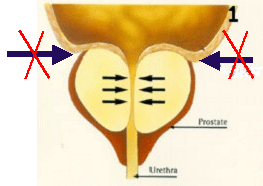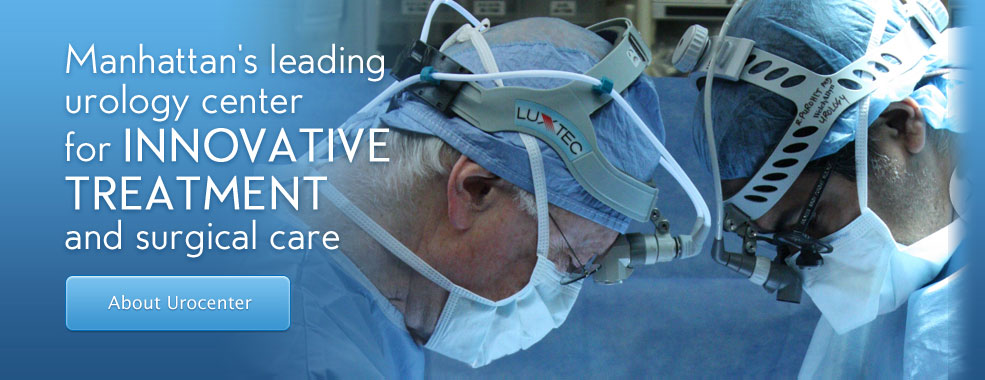Jerry G. Blaivas, MD, FACS Dr. Blaivas is a world-renowned urological expert, surgeon, distinguished author, educator, and medical pioneer. He was one of the founders of urodynamics and established many of the current surgical procedures used to correct stress incontinence, urinary fistulas, urethral diverticulum, overactive bladder and neurogenic bladder. He is also one of the… Continue Reading
See Our Main Site www.UroCenterofNewYork.com Blog Posts are Below: Continue Reading
Category Archives: Urological problems
Urethroplasty
by Rajveer S. Purohit, MD, MPH
In patients with urethral strictures, particularly those who have had recurrent and/or very dense strictures, urethroplasty or urethral reconstruction has a high rate of cure. Curing the stricture is one thing but relief of symptoms is another. Patients with long standing strictures may have permanent changes to the bladder in response to the stricture which can contribute to what are called obstructive urinary symptoms such as slow urinary stream as well as irritative urinary symptoms such as urinary urgency and frequency. These constellation of irritative symptoms are sometimes referred to as overactive bladder.
So does urethral reconstruction also cure overactive bladder in men who have urethral strictures? Until now there was no data on this.
We’ve previously presented our research on this topic at the largest meeting for urologists in the world. The data has now been submitted for publication. We evaluated our database of over 250 reconstructive cases and specifically looked at 28 men with urethral strictures who underwent reconstructive surgery and had a diagnosis of overactive bladder. Our data found that there was a 53% median reduction in symptoms and that 90% of men were cured of overactive bladder after urethroplasty with a median follow-up of approximately 1 year. In fact, men with urethral strictures who had the worst OAB symptoms had the greatest improvement in their OAB.
This information can give patients with urethral stricture valuable guidance and hope of what may expect after urethroplasty.
The table below summarizes our findings with higher OABSS reflecting worse overactive bladder symptoms.

BPH, Prostate Problems and Catheters
by Jerry G. Blaivas, MD, FACS
 Ask any doctor what BPH means and he will tell you it means that the prostate is enlarged. So what? If the prostate is enlarged, you probably have difficulty urinating, and if you don’t, you’ll probably get those symptoms in the future.
Ask any doctor what BPH means and he will tell you it means that the prostate is enlarged. So what? If the prostate is enlarged, you probably have difficulty urinating, and if you don’t, you’ll probably get those symptoms in the future.
Ask any doctor how you treat BPH and he will tell you first try medications (alpha adrenergic blocking agents like tamsulosin which in the marketplace is known as Flomax). If tamsulosin doesn’t work, surgery like transurethral resection of the prostate (TURP) or laser ablation of the prostate is effective in the great majority of men.
Like most generalizations, those statements are true. Sort of. BPH means benign prostatic hyperplasia and it means that the individual cells composing the prostate are enlarged. The result is an enlarged prostate, but the scientific term for this is BPE which means benign prostatic enlargement. We prefer this term because the prostate can be enlarged from other things like cancer or inflammation.
No matter what, the important thing is whether or not you have symptoms. You can have identical symptoms whether the prostate is large or small and just having a large prostate does not mean that symptoms are inevitable.
What are the symptoms?
 Prostate symptoms are divided into storage symptoms (when you are not trying to urinate) and voiding symptoms (when you are trying to urinate).
Prostate symptoms are divided into storage symptoms (when you are not trying to urinate) and voiding symptoms (when you are trying to urinate).
Storage symptoms include:
- Urinary frequency (going too often)
- Urinary urgency (having to rush to the bathroom)
- Urge incontinence (rushing to the bathroom and not getting there in time)
- Nocturia (getting up at night to urinate)
Voiding symptoms include:
- Difficulty urinating
- Having to push or strain
- Hesitancy – waiting to get started
- Weak or dribbling stream
- Feeling like you’re not emptying and, worst of all,
- Urinary retention – not being able to urinate at all, which requires an immediate catheter.
Most everyone believes that all of these symptoms are due to a blockage by the prostate.
What causes a prostate blockage?
 There are muscles in the wall of the prostate that are supposed to stay closed so that you don’t leak urine and open up when you want to urinate. It doesn’t matter whether the prostate is large or small if the muscles don’t relax during urination, it causes a blockage.
There are muscles in the wall of the prostate that are supposed to stay closed so that you don’t leak urine and open up when you want to urinate. It doesn’t matter whether the prostate is large or small if the muscles don’t relax during urination, it causes a blockage.
Thankfully, in most men the blockage is usually successfully treated with the alpha adrenergic blocking agents and if those fail, most patients are successfully treated with surgery. Sometimes though, neither the medication nor the surgery works or the doctor thinks that surgery is ill advised because he thinks the bladder doesn’t work well enough. For those patients there is no other alternative but a catheter. Or is there?
Do I need a Catheter?
We recently completed a research study that found that most men with weak bladders (detrusor underactivity) and those treated with catheters actually do have a blockage by the prostate and can be treated effectively with surgery. In fact, the patients treated with catheters, who were told that there was no alternative but the catheter, actually did as well after surgery as the patients with proven obstruction from the prostate!
Take home message: If you are being treated with the catheter and your doctor told you there is no alternative, get another opinion. Hopefully, you will be one of the 79% of catheter treated patients who are rendered catheter free after prostate surgery. Call us today at 646-205-3039.
- Thorner DA, Blaivas JG, Tsui JG, Kashan M, Weiss JP. Outcomes of Reduction Cystoplasty in Men with Impaired Detrusor Contractility, Urology. 2014 Apr;83(4):882-6.
- Tyler M1 , Aizen J1 , Badri A1 , Benedon M2 , Weiss J3 , Blaivas J TURP/KTPLAP Is An Effective Treatment For Men With Detrusor Underactivity, presented at the Annual Meeting of the International Continence Society, Rio de Janeiro, Oct, 2014, abstract 674, www.ics.org/Abstracts/…/000674.pdf
Urologic Problems in Men BPH and other urinary issues Incontinence Kidney Stones Sexuality & Hormones Prostatitis Prostate cancer treatment complications Urethral stricture Urological cancers Continue Reading
Urologic Problems in Women Incontinence Mesh Complications Vesico-vaginal fistula Prolapse (dropped bladder) Nocturia Urological cancers Urinary infections Kidney stones Neurogenic bladder Continue Reading




